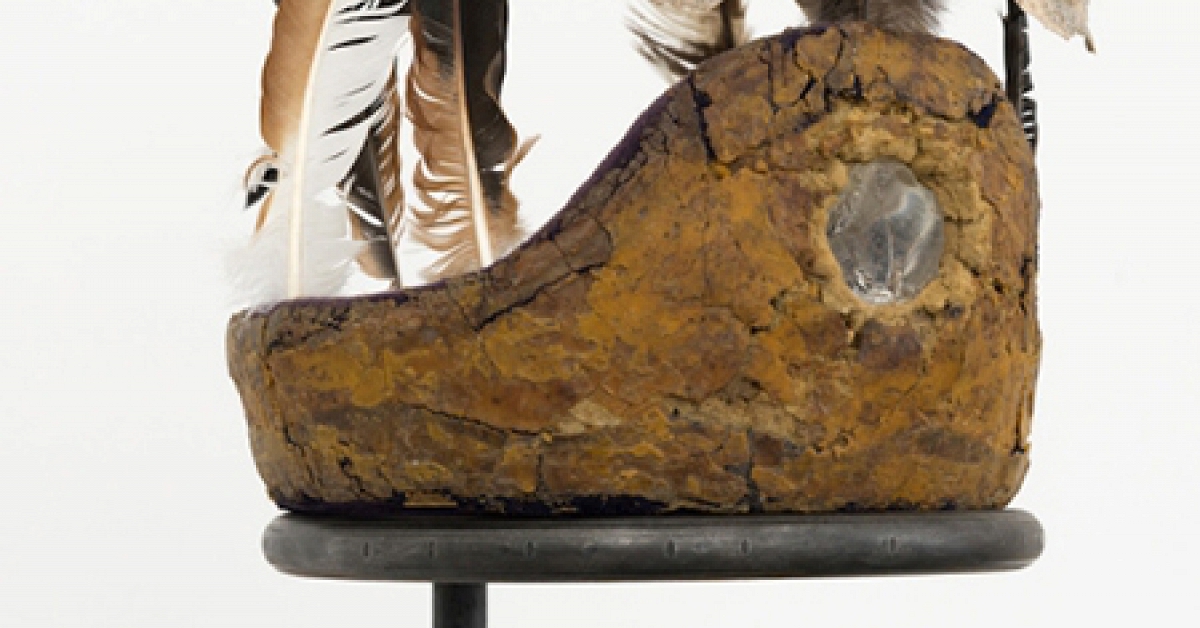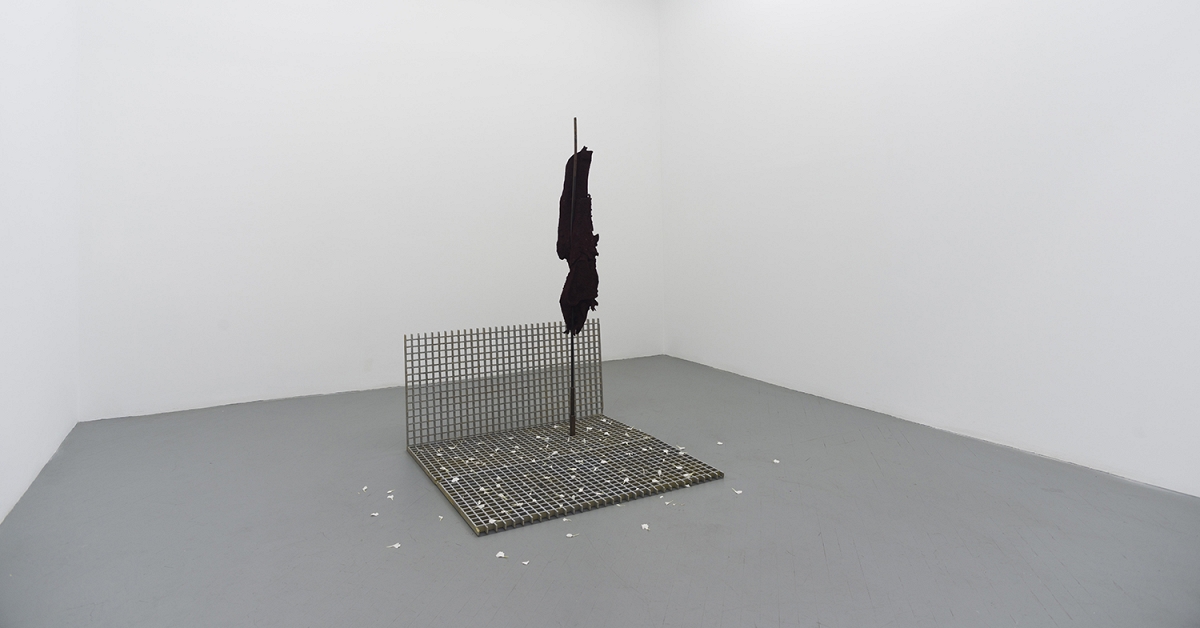Samuel Levi Jones Unbinds Fractured History of Justice
Introspective Magazine / Jan 2, 2017 / by Hilarie M. Sheets / Go to Original

The multi-panel Talk to Me, by Samuel Levi Jones, is a patchwork of rectangles in varying hues of beige, olive, taupe and terra-cotta. It covers an entire wall, floor-to-ceiling, at the New York space of Galerie Lelong, where “Burning all illusion,” an exhibition of the artist’s abstract constructions, is on view through January 28. The monumental minimalist grid could be read as a painting from a distance. But up close, the units are clearly pieces of weathered cloth, some with amorphous gray cardboard shapes clinging to their surfaces and all sewn together along their edges and mounted on panels. The fabric, in fact, comes from dismantled law books, skinned from the inside of their hard covers and bindings and assembled into a composition that suggests a towering abstracted library void of text.
In November, Jones spoke to Introspective at his studio in Chicago, where he was completing works for this, his first solo show at the Chelsea gallery. Through these pieces, he explained, he is investigating the monolithic authority of the law “in terms of who benefits from it and who doesn’t.” Referring to its punitive application to African-Americans, he noted, “All these men are put in prison for years and decades, then even exonerated with DNA tests, while that young guy from Stanford caught in the act of raping a girl gets a slap on the wrist.” Two new works in the show made from a set of Ohio law books are titled Malissa and Tarika, after two women who died at the hands of police in that state.
For him, the process of eviscerating the books and restructuring their components into another kind of system is both cathartic and meditative. When he began deconstructing sets of books all covered in the same-color material, he was fascinated to find that the material on the inside of the covers varied in tone, and he likes how Talk to Me could evoke a constellation of complexions. “Like the old saying ‘Don’t judge a book by its cover,’” explains Jones. “When you break it down and get past the surface, you expose the inside to see what’s within.”
Since receiving his MFA from Mills College, in Oakland, California, in 2012, the 38-year-old artist has been using encyclopedias and reference volumes, in addition to law books, as the physical and conceptual departure point for elegant geometric assemblages that he hopes raise questions about systems of power. “It’s not so much about the books themselves,” he says, “but about who compiles this stuff and who’s controlling the information and the histories.”
Jones is from the small town of Marion, Indiana, birthplace of James Dean and site of one of the last public lynchings in the United States, in 1930. After his high school history class discussed the incident, Jones was shocked to learn from his father that one of the two black men beaten by a mob and hung in the courthouse square was his great-uncle. “It’s just something we don’t talk about,” his father told him.
Jones came to art late, in his last semester at Taylor University, in Indiana. His girlfriend (now wife) bought him a camera, and he took a photography class. “I just enjoyed framing things and the process of making prints,” he says. He graduated Taylor with a BA in communication studies in 2002, but in 2006, he enrolled in the BFA program at Indianapolis’s Herron School of Art and Design, where the pioneering African-American abstract painter Hale Woodruff had studied in the early 1920s.
In grad school at Mills, Jones began to tie overlooked and repressed cultural and personal histories, like those of Woodruff or his great-uncle, more directly to his work. He used books as a springboard for the first time in 2011. He was responding to Gerhard Richter‘s 1972 painting series “48 Portraits,” for which the artist lifted head shots of his subjects, all white men who had made significant contributions to the arts and sciences, from encyclopedias. Thumbing through a 1972 edition of the Encyclopedia Britannica, Jones discovered only 13 African-American faces among the 736 reproduced. “Martin Luther King Jr. and Frederick Douglass were even in a section titled African-Americans rather than being under K or D,” says Jones. He printed enlarged visages of 24 black men and 24 black women who could have been included but weren’t — such as Nina Simone, James Baldwin, Gwendolyn Brooks and Langston Hughes — on paper pulped from the encyclopedia pages that excluded them. His grid of 48 portraits — which read as solid black squares until the underexposed faces come slowly into focus — was first exhibited in his MFA show at Mills and shown again this fall at EXPO Projects in Chicago. “They’re fighting for exposure,” he says of the spectral faces.






